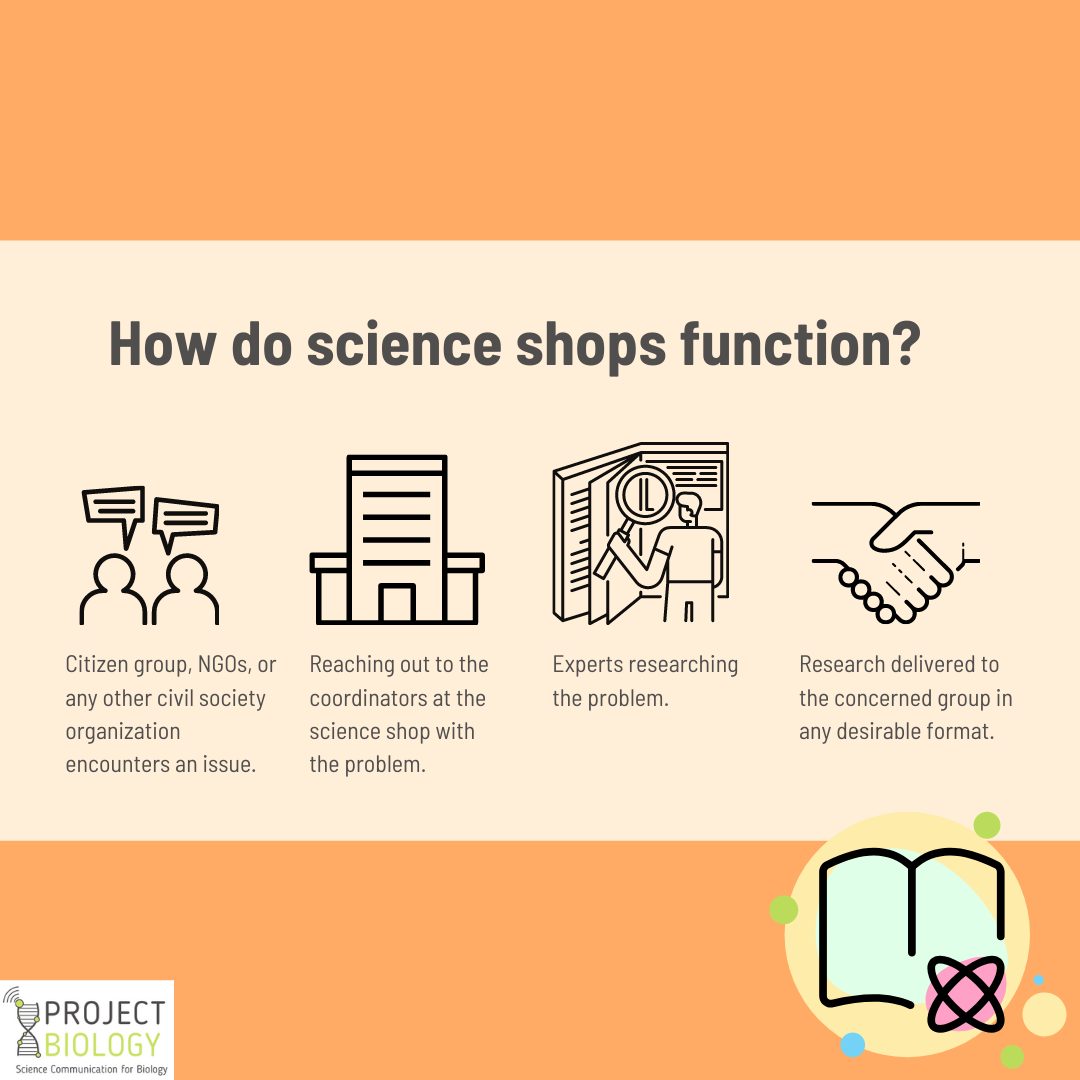Over the years, scientific outreach has undergone a metamorphic change, traveling from books to movie screens. As the public interest in scientific matters grows, taking accurate information to the broader public remains necessary. For this, the scientists behind the science shall engage in a scientific dialogue with the public. However, a considerable proportion of scientists are yet to recognize the fruits of engaging with the public.
Public engagement often appears to many scientists as a subsidiary activity of low importance. Therefore, to shift their public engagement perspectives, training scientists in science communication needs encouragement ad formal training. Likewise, a group of researchers from the USA undertook a study to determine the direct and indirect effects of training on the scientist’s public engagement perspectives.
Impact of science communication training: a microscopic view
Training scientists in science communication can include workshops and seminars. Such activities can enable scientists to engage in conversations with policymakers, media, and social communities. But, science communication being a growing discipline, presents a lack of established methods and experts to corroborate the efficacy of training scientists. Therefore, it is essential to understand how formal training can influence the scientist’s willingness towards public engagement. Many approaches can prove useful for this process. The study in question followed the path of the theory of planned behavior.
Theory of planned behavior: Basis of the study
The study interweaves the Theory of Planned Behavior (TPB) with science communication training and the scientist’s willingness to engage with the public. TPB is a useful model that studies behavioral patterns based on three factors. These factors are attitudes, norms, and efficacy. As per the study at hand:
Attitude presents how scientists look up to their audience. As per the study’s relevance, one can refer to attitude to the negative or positive connotation. The scientists perceive while approaching their audience. study’s relevance.
Norms include the ways and modes of public engagement, which can influence the scientist’s notion of public engagement.
Efficacy consists of two parts-
- Response efficacy: One can think of it as the scientist’s belief that their talk will positively impact the public and have a sound effect.
- Internal efficacy, on the other hand, is the scientist’s belief in his/her ability to engage in public speaking for communicating science.
Consequently, the researchers seek to understand the nature of the influence of these TPB variables on the impact created by communication training received by scientists.
Hypotheses – Research assumptions for further investigation
The researchers followed a detailed work plan. To posit the dynamics of the relation between the amount of science training and scientists’ willingness to engage in sci comm. activities, they formulated the following set of research hypotheses:
- Internal efficacy will have a positive effect on willingness to participate in face to face engagement.
- Similarly, response efficacy will also show a positive correlation to undertake public engagement activities.
- Norms will have a positive impact on the scientist’s perspectives to participate in face to face engagement.
- A positive attitude towards the audience will also tend to have a positive cause-effect relationship with intentions to face engagement.
The level of science communication training that a scientist has undergone will positively shape up his/her willingness to involve in the face to face engagement.
Methodology
The researchers surveyed academic scientists from sixty-two member universities of the Association of American Universities (AAU). They focused only on tenure track professors from a wide-ranging demographic population, who practiced research in STEM, education, and research. Tenure track professors were zeroed upon specifically to rope in scientists actively producing research work, which might be of interest to the public, journalists, policymakers, and discussion at science cafés. After this, the researchers segregated the universities by their nature (public or private), ranking, and discipline. Based on this, they grouped the scientists and obtained their email addresses. The study recorded a response rate of approximately 11 %.
The survey
The survey assessed the amount of science communication training received by the scientist in workshops and seminars. It asked the respondents to focus only on face-to-face engagement activities like talks to non-scientists, science at café forums, and science festivals. Next, the survey included questions which measured and scored the following variables:
Willingness to engage, internal and response efficacy, norms, attitude towards the audience, and training amount.
Results – The revelations!
The researchers consolidated the survey responses and performed a detailed statistical analysis to analyze many factors and their effects concurrently. Using this, the researchers found exciting answers to the following research questions:
Will the effect of the amount of science communication training on willingness to engage with the public be bolstered by self or internal efficacy?
The amount of science communication training had a strong and indirect relationship with the scientist’s willingness to engage. Internal efficacy established this relation with statistical significance. To put it concisely, those with more training had more positive internal effectiveness and desire to engage with the public.
Can response efficacy mediate the impact of the proportion of science communication training on intentions to engage with the public?
Response efficacy had a direct effect on the scientist’s willingness to participate. Per contra, it did not seem to mediate and influence the relationship between communication training and the scientist’s public engagement intentions.
Could norms channel and enhance the effect of communication training on the scientist’s engagement intentions?
Norms did not seem to have any direct or indirect relationship with the willingness to engage. Hence norms as a TPB factor did not influence science communication training on the scientist’s public engagement notions.
Will the scientist’s attitude towards one’s audience buttress the impact of communication training on the scientist’s willingness to engage?
Like internal efficacy, attitude towards the audience indirectly mediated and strengthened the relationship between the amount of communication training and his/her willingness to public engagement. To put it precisely, scientists with more training had a positive attitude towards their audience. Such a positive outlook, in turn, provided the spur to engage actively with the public.
Apart from finding out the direct and indirect factors playing an essential role in training-willingness relationship dynamics, one significant inference drawn by the researchers from the study was as follows:
Science communication training had a strong effect and impact on the scientist’s viewpoint on public engagement, influencing his/her willingness level even when “independent” of the TPB factors discussed above.
Highlights of the study
The study has beautifully delineated the indirect factors that affect the impact communication training can have on scientists. This detailed and nuanced analysis has specific objectives for science communication training programs to be more effective. It has depicted that, when training programs focus on improving the scientist’s internal efficacy, their enthusiasm to participate in public science engagement gets enhanced.
Importance of Science communication
Science communication activities are becoming highly necessary in today’s world plagued with disasters and largely looming pandemic like COVID-19. Hence, the responsibility to communicate reliable information to the public during such adversities lies with scientists. Such scenarios make effective science communication programs, the need of the hour.
The way forward
Although the study has done a thorough analysis, a few gaps are yet to be filled. These aspects must be addressed to give an in-depth understanding of the effect science communication training can elicit. Moreover, the study managed a low response value of 11%, focusing on tenure track academic scientists. Thus, future studies shall rope in a wide variety of scientists from non-academic backgrounds. Along with this, the researchers should design inclusive surveys to increase the response rate. More such studies can help throw more light on the dynamic connection between communication training and the scientist’s willingness level. It, in the long run, can help produce a positive domino effect in the science communication arena, bringing science close to the public.



